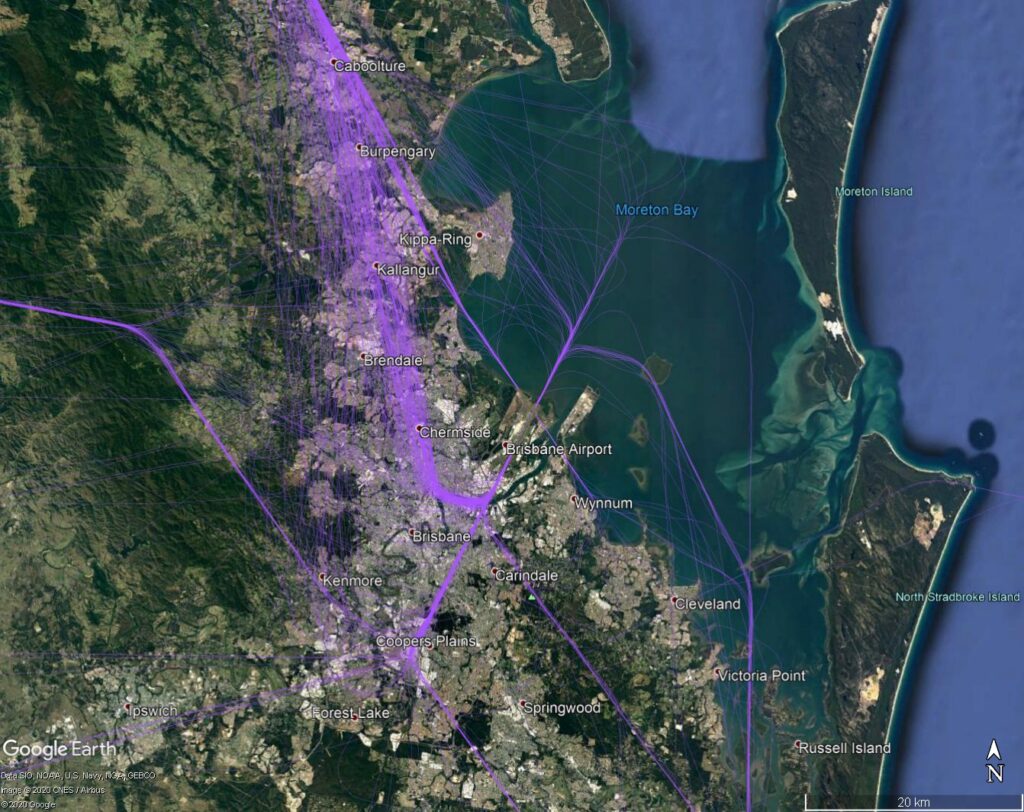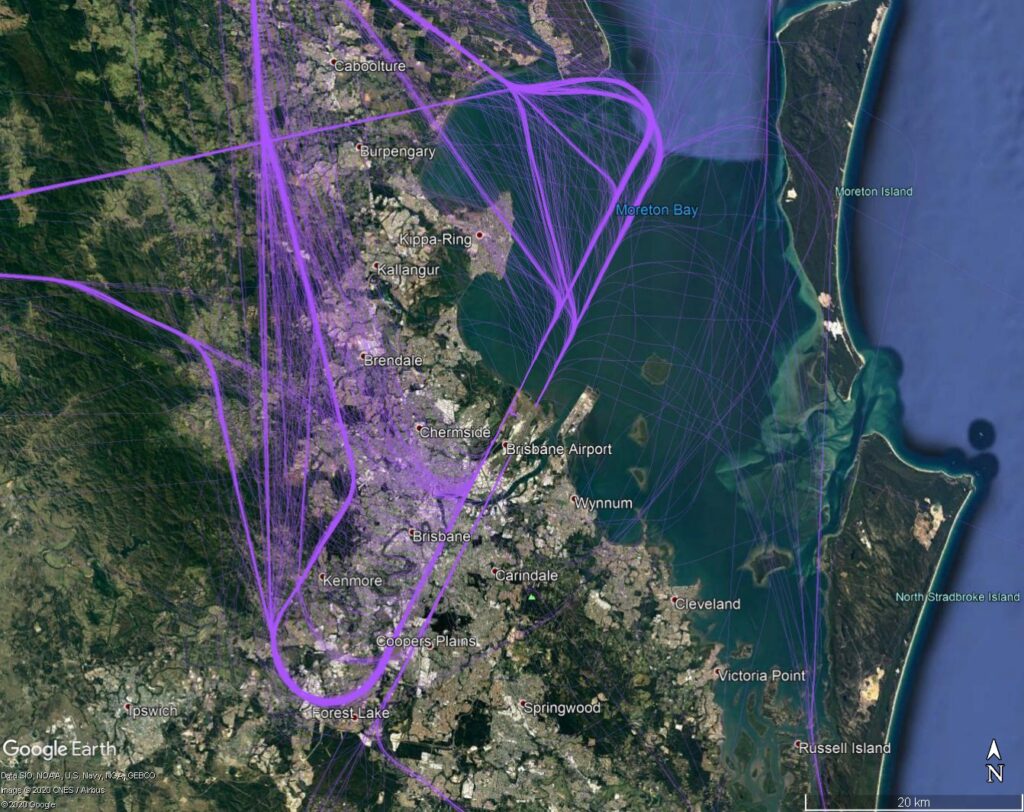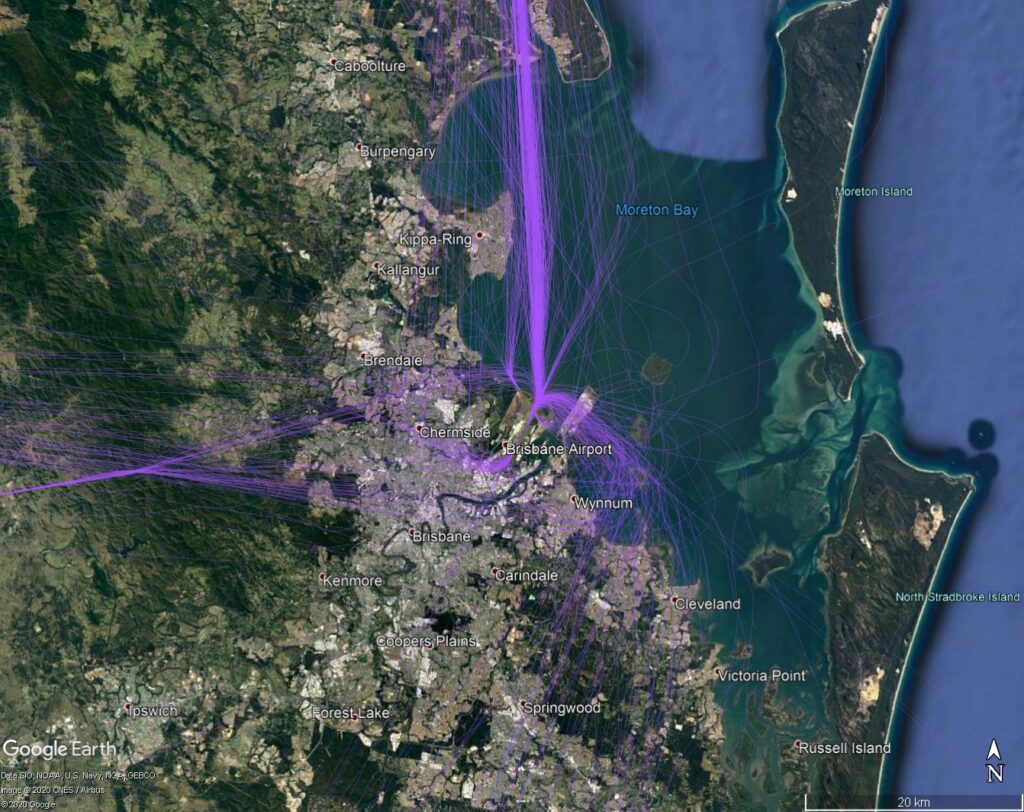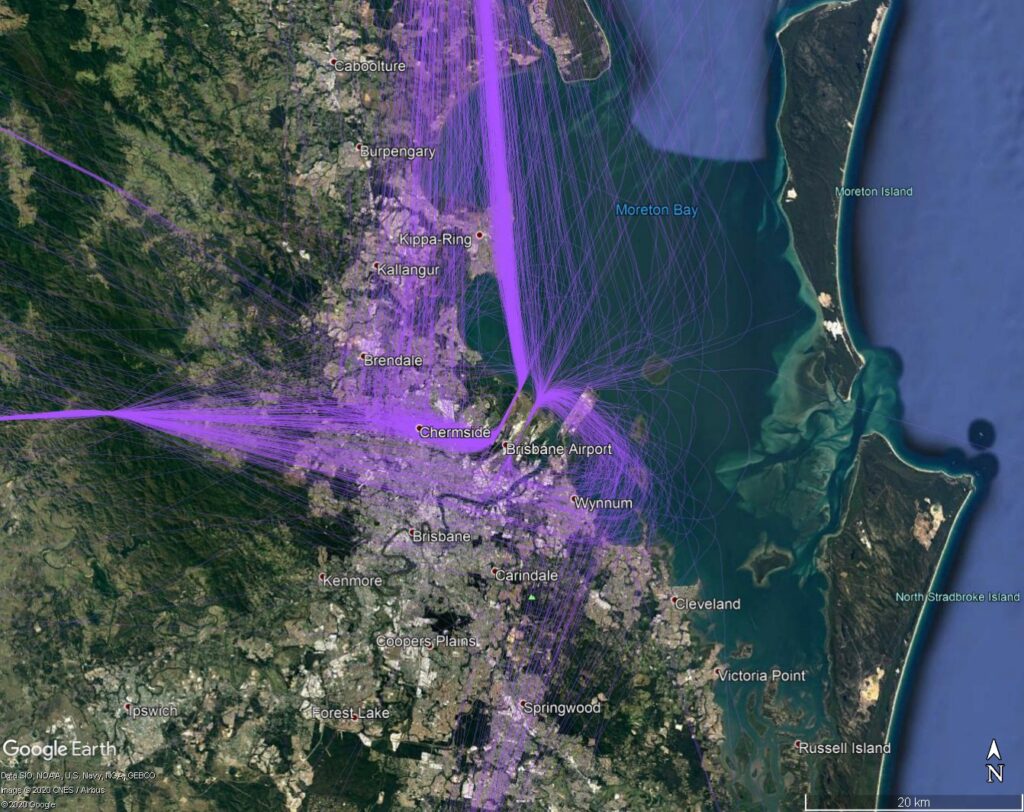How do turbo-prop aircraft fly?
While jet aircraft usually fly on published flight paths, turbo-propeller or turbo-prop aircraft (non-jet) have a range of different performance capabilities and therefore fly in a range of ways.
Some turbo-props fly on the published instrument arrival flight paths, while others use the published visual approaches which includes vectoring from air traffic control (ATC).
Turbo-prop departures are allocated headings by ATC based on their destination. This is to keep them safely separated from jet operations, due to differences in aircraft capability (for example speed and altitude of operations), and to maintain a steady flow of traffic.
This means we see a broad area where turbo-props may fly.
Impact of COVID-19 on aircraft operations
Aircraft are flying in accordance with the published procedures. The impacts of COVID-19 restrictions, and the subsequent reduction in interstate jet traffic movements during border closures, resulted in a different distribution of traffic across flight paths and areas of operation.
This is because air traffic control has not needed to use parallel runway operations due to the lower traffic levels.
This has resulted in a greater spread of turbo props outside of the ’swathe’ of operations than we expected.
Turbo props use a mix of jet and non-jet flight paths including visual approaches. A visual approach is when a pilot is operating the aircraft by visual references. This approach can therefore vary by several kilometres.
Changes to turbo-prop operations
We have worked closely with Brisbane Airport to understand the safety and traffic management requirements during this period of disruption.
We will implement a temporary Noise Abatement Procedure to adjust the traffic spread to match what would have been experienced had COVID-19 not affected traffic volumes. This will increase operations in the areas between the short and long approaches (the swathe) during periods of high demand, while the shorter visual approach will still occur when traffic volumes are generally lower.
This temporary procedure will be in place until operations increase to both runways, which will then result in a similar traffic management outcome – with more aircraft operating within the ‘swathes’.
Turbo props will continue to fly visual approaches after we return to parallel runway operations, generally in non-peak times.
Arrivals
Turbo-props need to be managed to make sure they can safely arrive along with jet operations. When the airport is busier, turbo-props more commonly arrive using the published flight paths so they can be safely separated from the jet aircraft traffic by air traffic control.
As there has been low jet traffic at Brisbane airport, turbo props were able to conduct visual approaches and arrive on a more direct path to the runway from their locations.
With borders opening and traffic levels increasing to the existing runway, more turbo-prop aircraft will be required to fly on the published instrument flight paths as they are processed in parallel with jet traffic to both runways.
The image above shows pre-COVID levels of turbo-prop arrivals with traffic arriving from both northern and southern locations.
Click on the images above to open a larger view in a new tab.
Departures
Turbo-props are usually assigned a heading at the departure end of the runway, depending on their destination. You will notice that turbo-prop aircraft using the legacy runway at night are quite spread out.
With borders opening and traffic levels increasing to the existing runway, more turbo-prop aircraft will depart from the existing runway.
The image above shows pre-COVID levels of turbo-prop departures with traffic departing from both northern and southern locations.
Click on the images above to open a larger view in a new tab.
Learn more about operations during COVID-19 on our Impact of COVID-19 on flight operations at Brisbane Airport page.
Note: All tracks during the stated month have been displayed. Track colours have been adjusted to show track density. Where aircraft are more concentrated the colour will appear darker.






